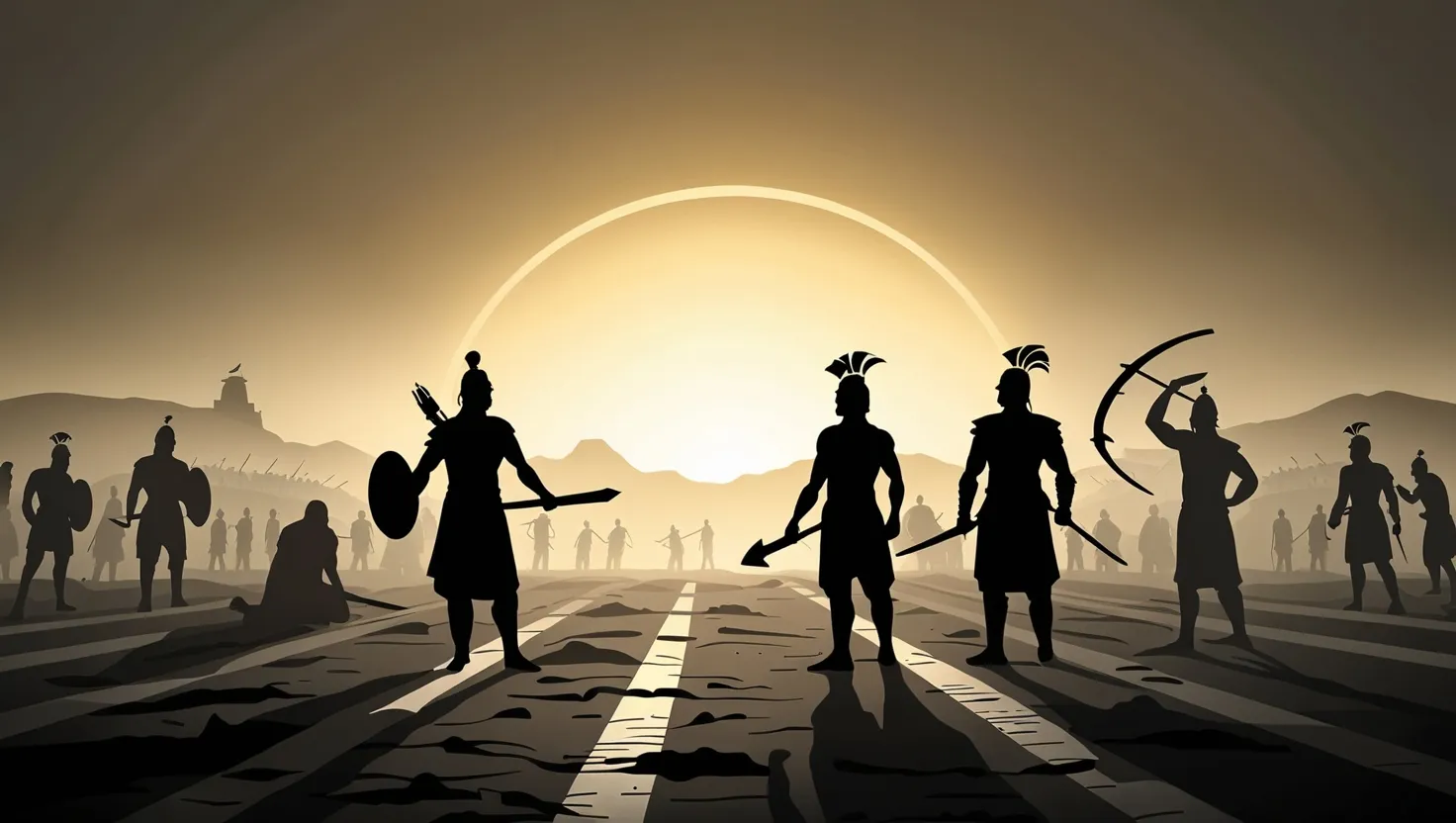The landscape in the Mahabharata isn’t just background scenery. I like to think of it as a quiet participant in every twist and turn—one that doesn’t speak, but still shapes everything. Let me show you how the world these characters walked on, hid in, and fought over affected their choices, fortunes, and even fates. Sometimes, the ground beneath their feet was more honest than the words passing between them.
When the Pandavas were sent into exile, the forest was their new home. But calling it a punishment only brushes the surface. Imagine a group used to feathered beds and endless servings suddenly worried about finding fresh water or escaping dangerous beasts. The forest shook off their royal masks. I picture Bhima, for instance, bigger and stronger than anyone else, suddenly facing things he couldn’t punch—hunger, bugs, his own frustration. Yet in this untamed world, he learned what protection really meant. Arjuna, the archer, began meditating in silence, his mind sharpened by hunger and solitude. The forest stripped the brothers to their basics, but it also set the ground for silent growth. The wild didn’t care about their titles; it only rewarded those who learned to respect its rules.
Have you ever wondered why palaces in old stories seem scarier than forests? It’s not just about hidden traps or magic; it’s the lies you can’t see. In Hastinapura’s shining halls, a polished floor covered the cracks underneath—cracks in trust, cracks in loyalty. Draupadi’s cries during the dice game bounced off expensive walls, unheard by those who should have listened. In this world, Duryodhana’s jealousy turned into stone—a heavy weight on every decision he made. Even the halls themselves seemed to play tricks, especially in Indraprastha where illusions turned stairs into ledges and water into air, leaving guests humiliated. Beautiful architecture hid ugly truths. This disconnect between appearance and reality is something I often miss when I think only of battles and heroes.
“Be sure you put your feet in the right place, then stand firm.” – Abraham Lincoln
What about rivers? For most of us, a river is just something to cross. In the Mahabharata, rivers were the real lines in the sand. The Saraswati didn’t just disappear; its vanishing marked the slow loss of old wisdom. When the Pandavas or their kin crossed a river, it often meant no going back. Ganga, the holy river, didn’t just sluice away blood after battle; it was there when Bhishma took his lifelong vow, a promise as deep as the river itself. Sometimes rivers were full of answers—overflowing with meaning—while at other times, their silence echoed what had been lost forever.
Now let’s talk about Kurukshetra. This was no regular field; it was picked for being pure—a safe place for big decisions and even bigger wars. Before all the chaos, it held only quiet crops and prayers. After the battle, the land was stained, the earth itself taking in more pain than most could bear. Krishna’s words to Arjuna, which would become the Bhagavad Gita, rose from this dust. Isn’t it strange? The same ground held hope and horror at the same time. That field didn’t just witness war, it absorbed it.
“Out of the mountain of despair, a stone of hope.” – Martin Luther King Jr.
Then there are the mountains. The Himalayas weren’t just a picturesque backdrop; they tested the Pandavas at the very end. Every step up their slopes was a test—who could leave behind their pride, anger, or sorrow? In a way, the mountain was the final judge, asking each brother how much baggage he was willing to carry. Only the one who could let go made it to the top, a detail easy to overlook if you focus only on swords and crowns.
Did you ever think about caves and hermitages? Small, dark, and plain, they might seem unimportant. But, these places gave shelter to wisdom. Rishis, far from the royal noise, spoke truths that others wouldn’t dare. Vidura, with his sparse home, offered advice kings were too proud to hear. In places where there is little to distract, the mind sharpens. Sometimes, the more stripped-down the setting, the clearer the answers become.
“Truth is ever to be found in simplicity, and not in the multiplicity and confusion of things.” – Isaac Newton
What if I told you that the Mahabharata’s landscapes teach us something basic: that where you are shapes who you become? In forests, the Pandavas had to be patient and clever. In palaces, it was easy for pride and tricks to take over. Rivers demanded humility—crossing them meant saying goodbye to the past, trusting in what lay ahead. Battlefields forced choices between mercy and power, faith and fear. Mountains, in their silence, measured character not by size or strength, but by the ability to let go.
Now, think about your life. Have you ever been changed just by being in a different place? Is there a park, a home, or even a city block that shaped your choices, for better or worse? It’s easy to overlook this connection in a world where we can move so fast and so far. Yet, even now, the land we walk on affects everything: how we speak, what we dream, even what we are afraid of.
“Wherever you go, you take yourself with you.” – Neil Gaiman
In the Mahabharata, no place is just a location. Every forest, river, hall, or mountain amplifies the journeys inside each character. The Pandavas are never simply alone; they are alone in an immense, echoing forest or at the foot of a merciless peak. Draupadi’s suffering is not just personal; the walls around her keep it hidden and let it fester. Krishna’s counsel isn’t just words, but words given as dust clouds swirl and blood sinks into the earth—reminding us that wisdom often comes when everything familiar falls away.
How often do we blame ourselves or others for how things turn out, forgetting how much the land, the weather, even the time of day, might play their parts? The Mahabharata suggests that environment is never passive. It doesn’t merely reflect the people living in it—it shapes them. Just as a river can flood or dry up, just as a mountain can loom large or shrink in mist, we change with circumstance.
Have you ever met someone who seemed kinder in one setting and cruel in another? Have you felt yourself become more hopeful on a sunny morning or more anxious when surrounded by noise? These little shifts are reminders that ground is not to be ignored. Physical space isn’t just a container—it is, itself, an influence.
I think about the Mahabharata’s landscapes as I walk a dusty road or watch a river at dawn. The lesson is simple, but easy to miss: whatever we do, we do it somewhere. Some places reveal who we are. Some places turn us into who we need to become. And some places, through silence or challenge, hold memory long after people have left.
“In every walk with nature, one receives far more than he seeks.” – John Muir
So, as you remember or read the Mahabharata, try to sense the ground under their feet. Notice how forests force patience. See how palaces can trap more than just bodies. Watch how rivers sweep away more than sand. The landscape is a quiet participant, asking each character: are you willing to change, or will you stay the same?
What is the ground under your feet teaching you today? Perhaps the real story is always in the place itself—waiting for someone to listen.






